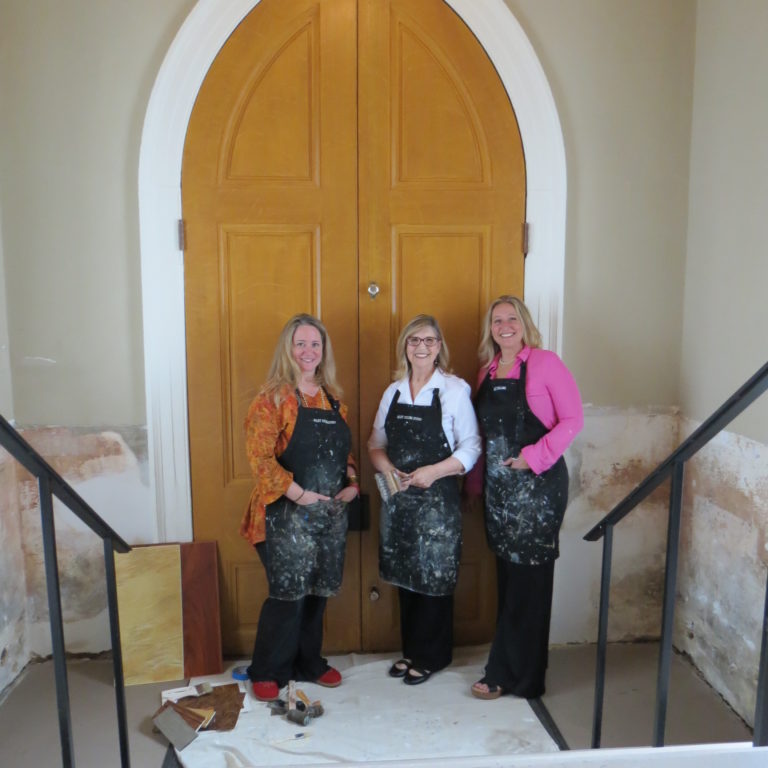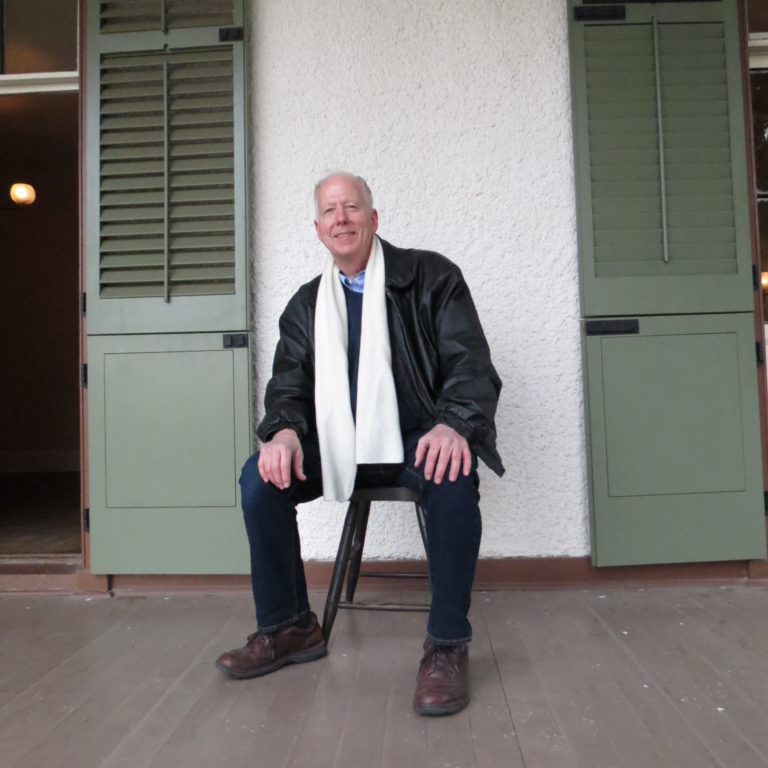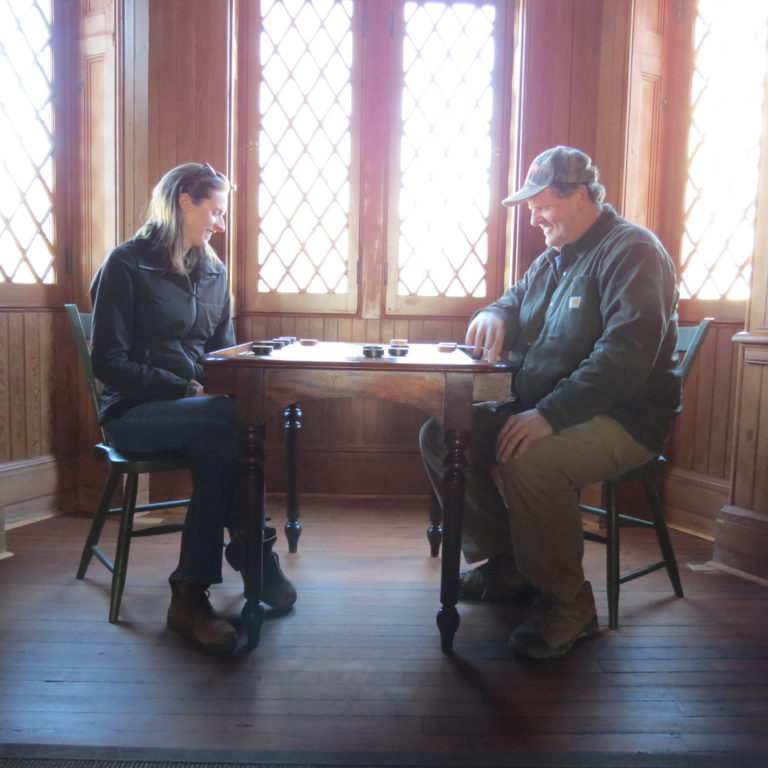
As part of our ten-year anniversary, we’re asking Senior Preservationist Jeffrey Larry to reflect on the history of preservation at President Lincoln’s Cottage. In this installment, he looks at various family-owned businesses with whom we’ve worked over the years.
There are certain people in life that once you find them you hold onto them. A good barber. The right dentist. Anyone that makes a perfect Gin Rickey. You keep coming back to them because they have shown they are people who care about their craft. One of the great pleasures of my job over the past ten years has been my interactions with some of the amazing tradespeople and artisans we have brought in to work on the Cottage.
As I explored the history behind the four companies I wanted to feature for this story the expected themes began to emerge: a commitment to quality, a passion for the work. But, there was something more. Something only obtained through a connection with the past. It is the intangible thing that occurs between the generations of a family-owned business.

Doug Boyd of D.L. Boyd, Inc sits on the south verandah in front of the stucco his company applied to the Cottage in 2004.
D.L. Boyd, Inc.
Doug Boyd came by the Cottage last week looking like a man who is content and confident. Content in his role as the third generation leader of a plaster company started in 1930 and confident that the family legacy will continue as his son Derrick prepares to take D.L. Boyd, Inc. well past its centennial.
Derrick credits much of their success to good ole family values. “My father and mother continually emphasized the importance of being forthright and maintaining a high level of personal integrity throughout my childhood and adolescence. This was the philosophy of my grandfather and great-grandfather as well. I’m proud of our company, and the polite, honest way that we’ve treated our customers.”
D.L. Boyd’s connection to the Cottage began during the restoration in 2004 when they removed the stucco on the entire exterior and worked fastidiously with a historic plaster consultant to develop and apply a new mix that matched the original in coloring and texture. Since the site opened in 2008, Doug has returned at least twice a year to help us address the ongoing challenges of maintaining the historic plaster and stucco of the Cottage and Robert H. Smith Visitor Education Center.
I asked Doug what that 2004 project and his ongoing relationship with the Cottage meant to him. In an email he responded, “The Cottage’s charm and importance in history affected me and most of my men. It is unusual for my plasterers to develop an attachment to a project and they took great care to measure every ingredient in every batch with great precision. Even today, 14 years later, when visiting the Old Soldiers Home, I still stop and think about this buildings place in history as the home of Abraham Lincoln and his family.”

Wagner President Dean Jagusch stands next to Charlie Isom who has been maintaining the Cottage roof for the past eight years.
Wagner Roofing
As Chuck Wagner prepared to pass on his 100-year old family roofing business to Dean Jagusch in 2014 he wrote, “Dean shares the commitment of my grandfather Otto to produce work of the highest standard and cultivating the next generation of craftsmen in the field.” He continued by saying, “I owe much to the family members who came before me. They dedicated themselves to providing for their families and those who worked for them during difficult and trying times. It has been a challenge walking in the footsteps of such men but they left a legacy of excellence in workmanship and service which continues today.” Indeed it does.
Wagner Roofing also has a long connection with the Cottage. In 2004, they removed the Cottage’s modern asphalt shingles and installed slate and standing seam, lead-coated copper roofs to match the layout present during Lincoln’s time. In 2014, they installed a new, Ludowici, clay-tile roof on the Robert H. Smith Visitor Education Center. The original tile roof, from 1905, was removed in the mid-20th century and replaced with asphalt shingles. In 2015, they installed copper vents on the roof of the adjacent water tower and, for the past ten years, have performed, and consulted on, all of the roof maintenance and biannual inspections.
When asked about Wagner’s long history with the Cottage Company President Dean Jagusch had this to say, “The team at Lincoln’s Cottage take a professional and collaborative view that nicely aligns with our preservation-minded approach. We are honored to be associated with one of the nation’s most interesting historic treasures.”

Barbara Billet with daughters Kellie and Amy in front of the Cottage vestibule doors they grained in 2007.
Billet Collins
I could sit and talk with Barbara Billet and her daughters Kellie and Amy all day. Alas, their time was short when they stopped by the Cottage last week to take a photograph in front of the vestibule doors they grained just before the site opened in 2007. The history of their decorative arts studio began in 1985 when Barbara replied to a newspaper ad in the Washington Post looking for decorative painters. A few days later she found herself at the top of a platform painting and gilding the frieze and ceiling of Union Station. Barbara’s love of color and design came not only from her studies at the Corcoran and Herron Schools of Art and Design but from her father who used his artistic talents while working for the CIA in the late 1950s. (See, I told you I could talk with them all day!) The family tradition of artistic excellence was passed on to Kellie and Amy who teamed up with their mother to form the Billet Collins Studio in the 1990s.
Graining, or Faux Bois is the practice of imitating wood grain with paint and is historically used to present a more expensive wood. In addition to the vestibule and first floor doors, Barbara, Kellie and Amy also grained the baseboard and stairway trim. Their design was based on various exposures that confirmed that the Lincoln era graining was painted to look like white oak. We’ve had them back a few times over the years including last winter when they grained over 100’ of shoe molding for the Drawing Room.
In a recent email Kellie responded to my questions about the family business and Billet Collins’ connection to the Cottage: “Working with my family, goes beyond the artistry that we create….it’s more than having a job or making an income. It’s truly a way of life. We paint our projects with the same sense of pride like we’re painting our own home. We feel that same way about working at Lincoln’s Cottage. We got to know that house. We know how the sun comes through the windows at 11:00. We know what it sounds like to walk across the old wooden floors. We know where the repairs were made that bring character to the walls and architecture. We think about how Lincoln would have lived in that house. Where we would have stood to look out the window, what he would have seen.
“So when we work on a project month after month, and then come back for touch ups, or site visits, year after year, we’re coming to OUR home. You know that feeling. We feel that way about Lincoln’s Cottage.”

Ashley and her father Chuck Spitznagel of Federal Masonry “take a game” while sitting in the Cottage library.
Federal Masonry
Chuck Spitznagel loves masonry. Even after 40 years in the business his excitement still shines through when he points out unique features in brick, stone and mortar. He started his career in 1978 with a four year apprenticeship in his father’s masonry firm. In 1982 the family moved to Ottawa where he helped run his father’s business while taking courses at the Canadian Masonry Institute. The cold Canadian winters pushed him back to Maryland in 2001 and he became Project Manager, and eventually Head Trainer, at the renowned masonry restoration firm Cathedral Stone Products. Chuck reformed the family business in 2009 and soon after his daughter Ashley became the third generation of Spitznagel in the masonry trade. “I do a little bit of everything in the company,” she wrote in an email, “office work, project manager, estimator… we are definitely a small family business!”
Though their association with the site is shorter than the other featured companies they have made a positive impact since they first consulted on and repointed the deteriorated mortar of the Visitor Center amphitheater in 2014. They returned to the site in 2015 as we began a below-grade repointing project to remediate moisture intrusion on the entire north elevation. In 2016 they repointed the deteriorated mortar on three interior spaces and, most recently, they consulted on methodologies to address rising damp in the Cottage basement.
Chuck’s connection with the Cottage goes beyond his love of its brickwork and stucco. He understands the authenticity of the place. On his first visit to the site he asked about the handrail on the stairs. On another visit he talked about what Lincoln might have seen from the veranda. On his most recent visit he sat in the library and tried to picture Lincoln reading by the fireplace. “I enjoy coming to the Cottage because I have to use my imagination. I don’t know exactly what it is and I don’t always feel this at other historic sites where I’ve worked but it really makes me think about what it was like for Lincoln while he lived here.”
***
We hold on to all of these people because they have proven time and again their commitment to quality and passion for their work. They acknowledge that connection to the past and embrace the intangible thing that spans the generations. As I spoke with each of them something else became clear. This was not just another job. They truly appreciate the opportunity to have contributed to the Cottage’s restoration and ongoing preservation. They get what we do here. And so, it could be said, we hold onto these people because they hold onto us.
